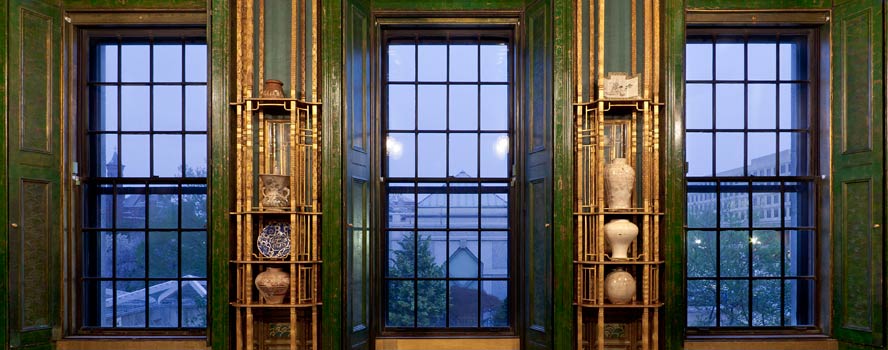The Peacock Room, 1993-2011
(Click on items in the room to open the item record in a new page.)
Inspired by the restoration of the room’s original splendor in the early 1990s, the Freer began to acquire and display blue-and-white Kangxi porcelain as a way to emulate Whistler’s original artistic vision. Eighty vessels from the collection were installed throughout the room atop many of its 218 shelves.
The Peacock Room was empty when it was sold in 1904. Leyland’s Kangxi ware was sold after his death, and the room’s vibrant paint scheme appeared greenish brown, having been subdued by the accretion of dirt and aged varnish.
Despite the patina of grime and layers of discolored varnish—and despite the structural strain it endured in being taken apart and reassembled in London, Detroit, and Washington—the Peacock Room did not undergo significant conservation until the 1940s. John and Richard Finlayson, art restorers from Boston, dismantled the room and constructed an underlying framework for Whistler's decorations and Jeckyll's shelves. They also attempted to make cosmetic improvements by overpainting the decorations rather than by cleaning them. The team of restorers used oil paint and gold and silver leaf to retouch some surfaces, such as the shutters and the fighting peacocks. In a far cry from Whistler's original vision, they daubed greenish brown pigment on the more purely decorative areas (behind the shelves and on the wainscoting and doors), which only added to the appearance of dirty build-up.
Advances in conservation and scientific research prompted staff members of the Freer Gallery of Art to undertake a major cleaning effort from 1989 to 1992.
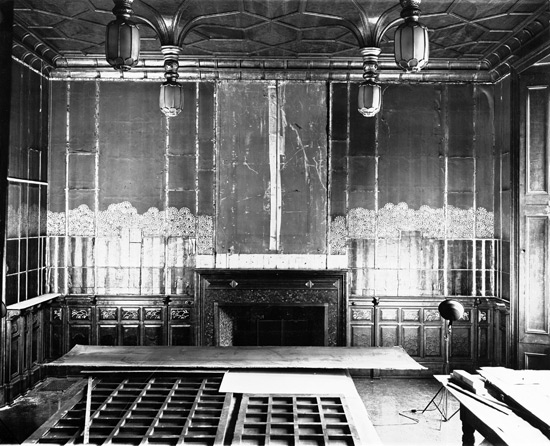
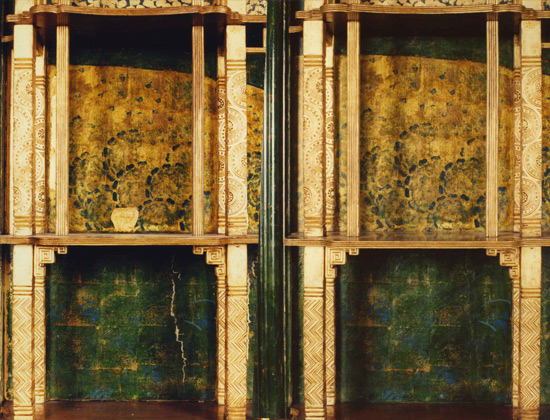
The results of the conservation revealed colors and details not seen in decades. As Linda Merrill, the curator in charge of the project, described in her study of the Peacock Room, "Dark mottled surface[s] became a shimmering greenish gold… [and] the lusterless ceiling revealed a network of peacock feathers spun across a golden ground."
Inspired by the restoration of the room's original splendor, the Freer Gallery of Art began to acquire and display Kangxi blue-and-white porcelain from the Qing dynasty as a way to emulate, as closely as possible, Whistler's original artistic vision of the room. Over time, however, the static display of Chinese ceramics made it difficult, once again, to see the room in all its variety. The Peacock Room had become a victim of its own status as a masterpiece.
To revivify the space and highlight an overlooked chapter in the room's history, in 2011 the Peacock Room was reinstalled with Freer's collection of Asian ceramics. The idea was to present the room as it looked in 1908, when it was a dynamic artistic space with many stories to tell.
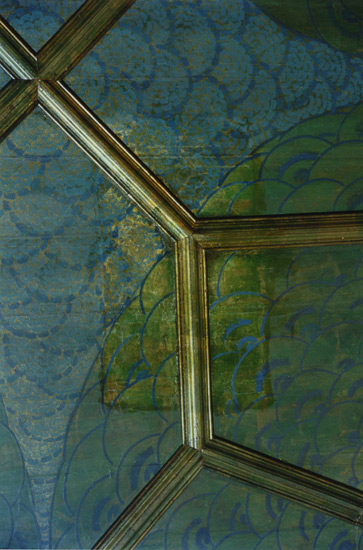
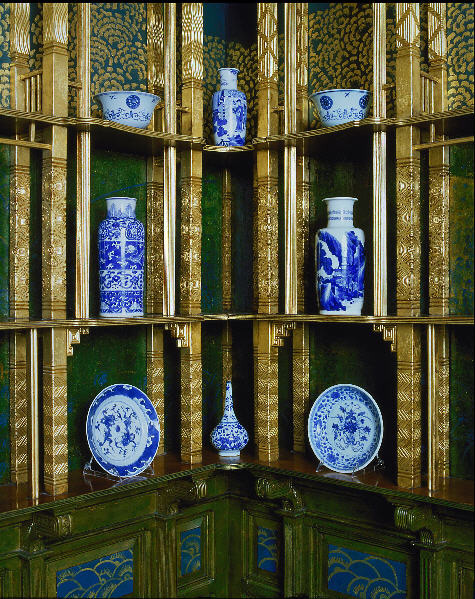
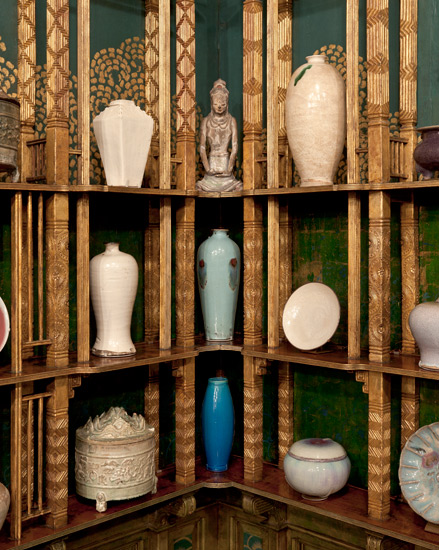
In the summer of 2011, the Freer installed special protective film over the Peacock Room windows, and the museum now opens the shutters one afternoon a month. In the filtered natural light, visitors can see painterly details and tonal variations that are otherwise imperceptible.
